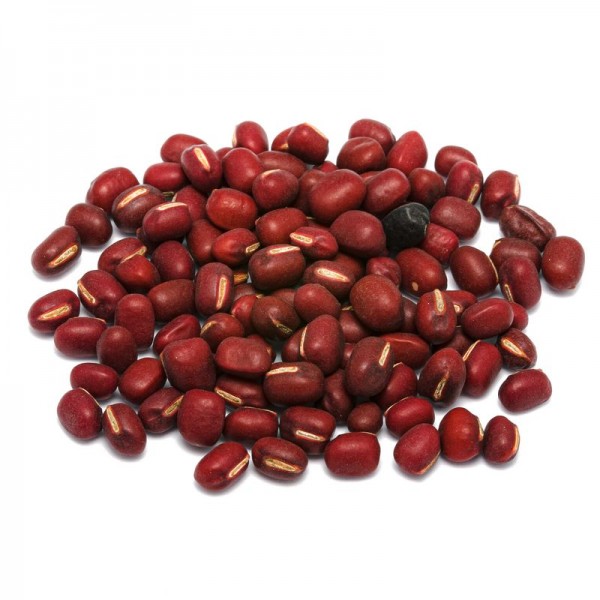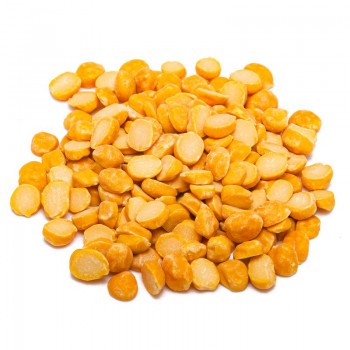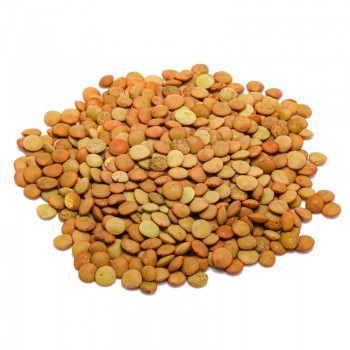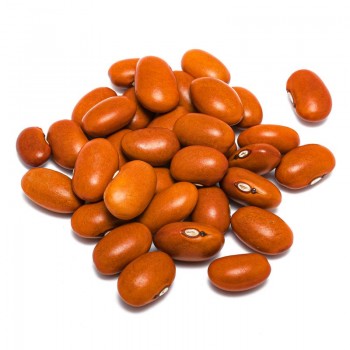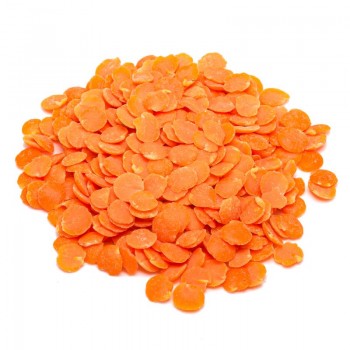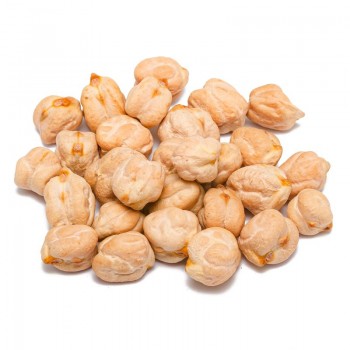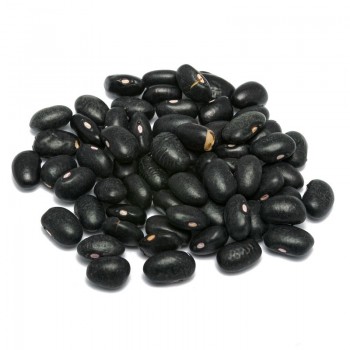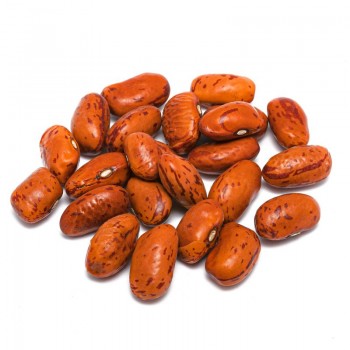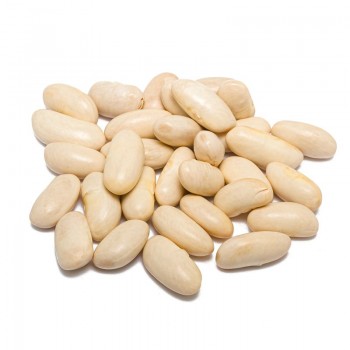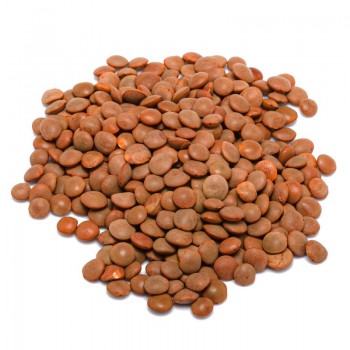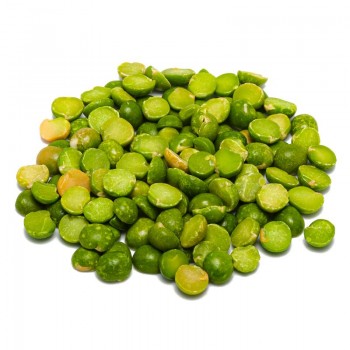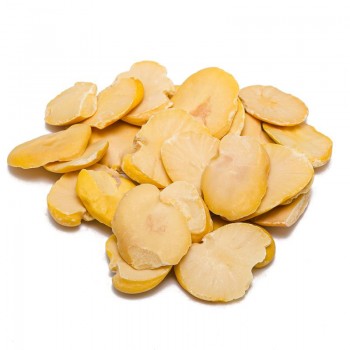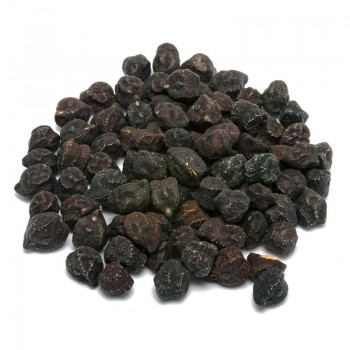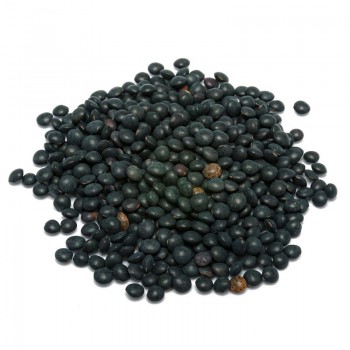Red Azuki Beans have Asian origins, and in fact their name derives from the Japanese "small bean". Over time, they have spread to crops all over the world as delicious red beans , appreciated in sweet and savory dishes, and for their nutritional properties.
Red Azuki Beans: properties and benefits
This type of adzuki red bean is often used to create sweets and desserts in Japan, but in the rest of the world it goes well with many different savory recipes. In any case, adzuki beans are sought after because they are a very healthy, nutritious variety of beans that provide a great deal of health benefits.
They are recommended as part of a healthy and nutritious diet , because Adzuki beans are high in dietary fiber, which helps with digestive health - they improve nutrient absorption. Regular consumption of dietary fiber also helps reduce problems such as constipation and diarrhea, and reduce the risk of intestinal diseases.
The dietary fiber of beans also helps regulate blood sugar levels, avoiding an increase in blood sugar or drops in sugar. Additionally, in combination with other minerals found in red beans, the fiber helps improve the health of the cardiovascular system. It manages not to raise cholesterol and improves blood flow.
The many important minerals found in adzuki beans serve to improve muscle response and strengthen bones. In particular, they perform a beneficial action via a mineral in adzuki beans called molybdenum. It is a useful element in detoxifying the liver. Molybdenum is present in high doses in red beans, and half a serving is enough to receive 100% of the recommended daily allowance.
On a dietary level, adzuki beans provide a dose of protein and dietary fiber , making us feel more satiated. Furthermore, they contain very few sugars and for this reason they are suitable for those who do not want to increase the glycemic load, typical of most legumes.
The vegetable proteins contained in beans also provide lasting energy throughout the day.
In addition, adzuki beans contain over 20 different types of antioxidants, which are compounds that can help prevent certain types of cell damage. Experts recommend consuming foods rich in antioxidants to keep the body healthy and prevent cell and tissue aging.
Origins and History of cultivation
Throughout history, beans have always been considered an energy food par excellence, and pasta and beans (or the bean-carbohydrate combination) has been the alternative to meat consumption for centuries. Even today, beans are considered a valuable food on a nutritional level, and as regards Red Azuki Beans - Red Soy the speech is even more evident due to its diffusion in Asia, as a food for sweet or savory recipes.
Red Azuki Beans are part of the many varieties of beans, and are often considered "red soy" due to their characteristics.
This type of bean was first grown in East Asia, and later crossed with species native to the Himalayas. The earliest evidence found it in the Japanese ruins of Awazu-kotei in 4000 BC. In China and Korea it spread between 3000 BC. and 1000 BC
In Japan, red beans are the second most popular legume after soy, and are grown today throughout Asia including Korea, southern China, but also in India, Taiwan, Thailand and the Philippines. In addition, the azuki bean is grown in New Zealand, Angola, the United States and Canada and Colombia, as well as in some sites in South America.
The main use of azuki red beans throughout the Far East is as a confectionery product, appreciated for their delicate flavor and the characteristic grainy texture of the dough which serves as a filling for various specialties.
In Europe, the spread has occurred in recent times, through trade with the East and the spread of crops to the rest of the world.
Plant and Fruit
The plant that gives the beans is the Vigna angularis, nipponensis variety, cultivated for millennia in the soils and in a warm-temperate climate (between 15 ° C and 30 ° C). The crop is not frost resistant and needs soil temperatures above 10 ° C for germination.
Conversely, the plant can withstand drought. Growth is slow, and farming systems differ widely between countries. The most familiar cultivars in East Asia have a uniform red color, but there are also white, black, gray and variously mottled varieties. We remember thatsometimes Azuki beans are called red soy beans, while in reality they are real legumes, far from soy.
Nutritional values of Red Azuki Beans
The Azuki Beans are packed with beneficial nutrients. Analyzing 100 grams of Red Azuki Beans we see that they make 280 kcal available, as well as proteins (about 20%), fats (2.1%), few carbohydrates (about 4 g) and fiber (about 9 %).
Among the mineral salts are present in the Red Azuki Beans moderate levels of calcium (about 27 mg / 100 g), iron (about 2 mg about), phosphorus (about 140 mg), magnesium (about 70 mg / 100 g) , copper (0.20 mg) and potassium (about 355 mg / 100 g) and excellent doses of manganese (about 0.5 mg / 100 g), selenium and zinc.
By consuming Red Azuki Beans - Red Soy, you assimilate: vitamin B6, riboflavin, niacin, thiamine (0.244 mg / 100 g), good doses of folate - vitamin B9 (about 150 mcg / 100 g), and Omega-fats 6 (about 20 mg / 100 g).
How to consume Red Azuki Beans - Red Soy in the kitchen
In Japan and other Asian countries, red beans are boiled, mashed and made into a sweetened paste . It will be used as a filling for sandwiches, to flavor candies and sweets and ice cream. Azuki or Adzuki beans are also an excellent sauce for pancakes, in kitchens other than ours.
Adzuki beans can be used in both sweet and savory dishes, and like other legumes, they are a healthy substitute for meat. You can add them to soups, stews, or cook them with vegetables - great with cauliflower. They can also be added to salads with cereals and legumes.
As with most legumes, Red Azuki Beans - Red Soybeans must be rinsed before use, and soaked for months for more or less 6 hours. Once cooked, after about 45 minutes, they can be enjoyed cold, cooked, pureed or baked.
Recipe with Red Azuki Beans - Red Soy: Anko pasta
It is a sweet red bean paste (Anko) with two varieties: Tsubuan (coarse paste) and Koshian (fine paste), used to make delicious Japanese sweets.
Ingredients: 1 cup of dried red kidney beans - 4 cups of water - 1 ½ cup of white sugar
Preparation: put the beans in a pan and cover with 2 cups of water, bring to a boil and cook for 5 minutes. Drain and discard the water.
Put the drained beans in a clean saucepan and cover with 2 or 3 cups of water. Bring to a boil, reduce heat, cover the saucepan and simmer, adding more water as needed, until the beans are soft and can be squeezed between your fingers. Cooking duration: from 1 ½ to 2 hours.
Drain the beans and discard the water.
Mix the beans and sugar in a saucepan over medium-high heat. Cook, stirring constantly for about 10 minutes, that is, until the sugar dissolves and the beans form a soft, shiny paste. Immediately transfer the pasta to a container to cool it. Store the pastry covered, in the refrigerator - this dough is used for filling pastries, cakes and other desserts.
Red Azuki Beans: side effects and contraindications
There are no particular contraindications to the consumption of Red Azuki Beans, in medium doses. In any case, beans can give some side effects such as flatulence (intestinal gas) or other digestive disorders. This effect is given by the inability at times to process these foods, instead of the enzymes that will use the bacterial flora, producing intestinal gas.
Red Azuki Beans - Red Soy are not suitable for those suffering from gastrointestinal diseases and gout, unless they have consulted a doctor.
In rare cases, an allergic reaction to this variety of legumes is possible, in the form of redness on the skin or itching. In particular, people allergic to nickel must pay attention to the doses, given the presence of this metal in legumes.

